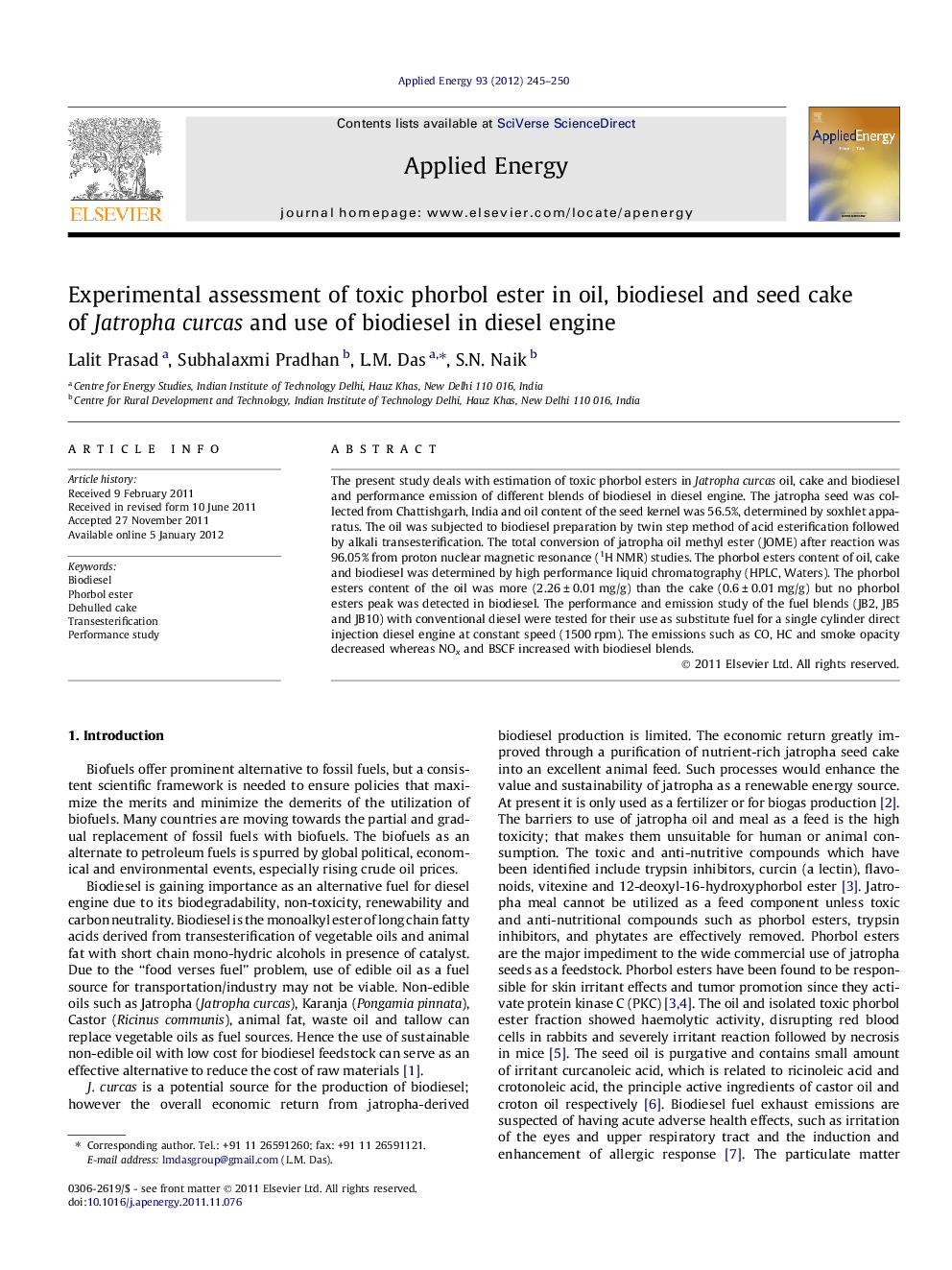| Article ID | Journal | Published Year | Pages | File Type |
|---|---|---|---|---|
| 243328 | Applied Energy | 2012 | 6 Pages |
The present study deals with estimation of toxic phorbol esters in Jatropha curcas oil, cake and biodiesel and performance emission of different blends of biodiesel in diesel engine. The jatropha seed was collected from Chattishgarh, India and oil content of the seed kernel was 56.5%, determined by soxhlet apparatus. The oil was subjected to biodiesel preparation by twin step method of acid esterification followed by alkali transesterification. The total conversion of jatropha oil methyl ester (JOME) after reaction was 96.05% from proton nuclear magnetic resonance (1H NMR) studies. The phorbol esters content of oil, cake and biodiesel was determined by high performance liquid chromatography (HPLC, Waters). The phorbol esters content of the oil was more (2.26 ± 0.01 mg/g) than the cake (0.6 ± 0.01 mg/g) but no phorbol esters peak was detected in biodiesel. The performance and emission study of the fuel blends (JB2, JB5 and JB10) with conventional diesel were tested for their use as substitute fuel for a single cylinder direct injection diesel engine at constant speed (1500 rpm). The emissions such as CO, HC and smoke opacity decreased whereas NOx and BSCF increased with biodiesel blends.
► In the present study toxic phorbol esters were detected in oil and seed cake of Jatropha curcas but not detected in biodiesel using high performance liquid chromatography (HPLC). ► The quantity of phorbol esters in Jatropha curcas oil and cake were amounted to be 2.12 ± 0.02 mg/g and 0.6 ± 0.01 mg/g respectively. ► As jatropha oil is a potential source for biodiesel preparation, huge amount of oil and cake will be generated and hence need to be handled carefully. ► Upon engine study exhaust pollutant such as hydrocarbon, smoke opacity and carbon monoxide reduced substantially.
